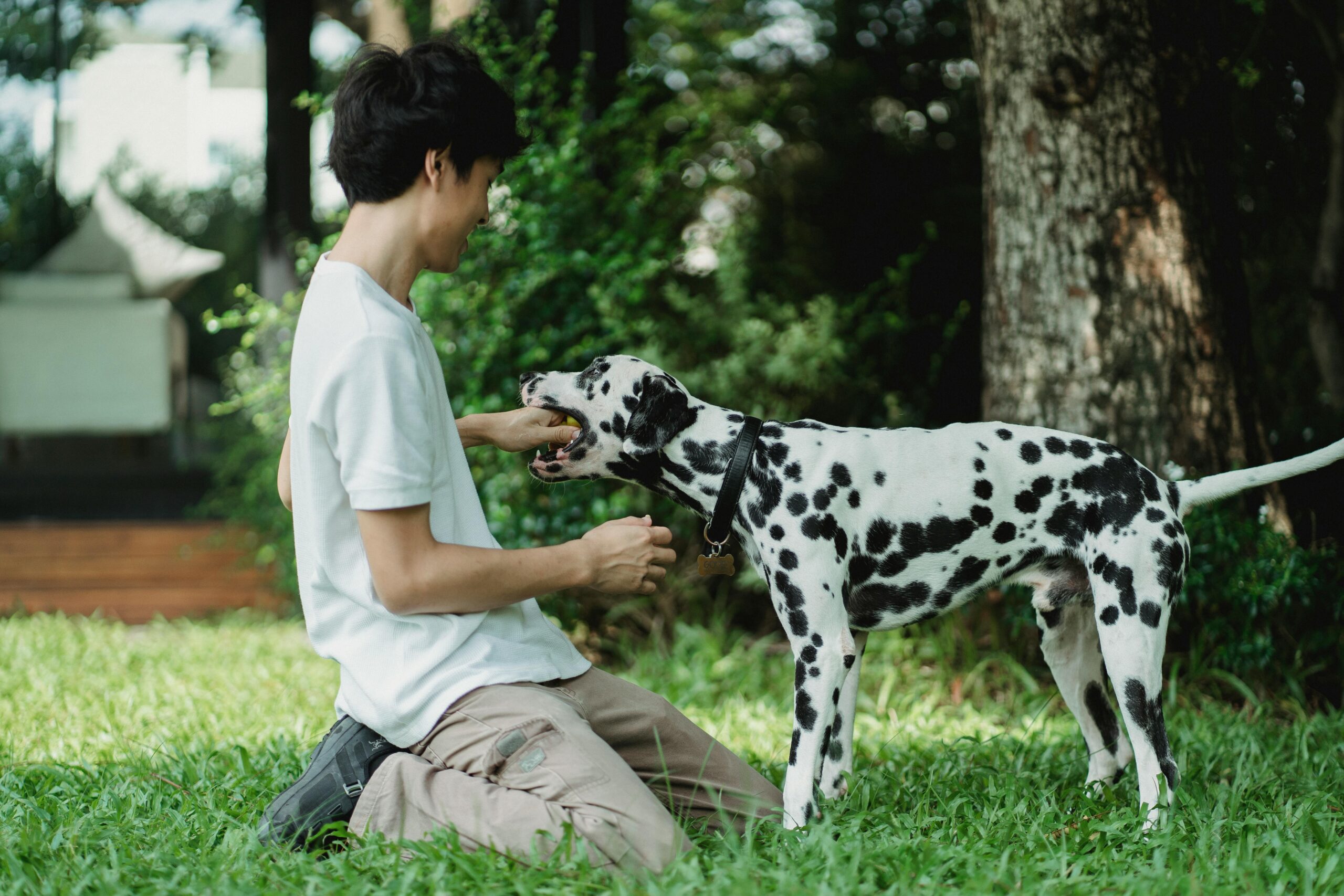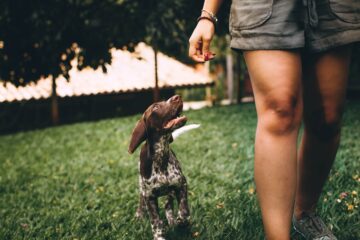Ever found yourself wondering,
Why does my dog gently mouth my hand?
This common behavior can be perplexing for pet owners, but fear not – it’s often a natural expression of your canine companion’s instincts and communication style.
In this comprehensive guide, we’ll unravel the mystery behind why dogs engage in this behavior and provide you with 15 valuable tips to not only understand but also address and manage this gentle mouthing.
By gaining insights into your dog’s unique way of connecting, you’ll be equipped to strengthen your bond and promote positive interactions.
Table of Contents
Understanding Canine Behavior: Why Does My Dog Gently Mouth My Hand?
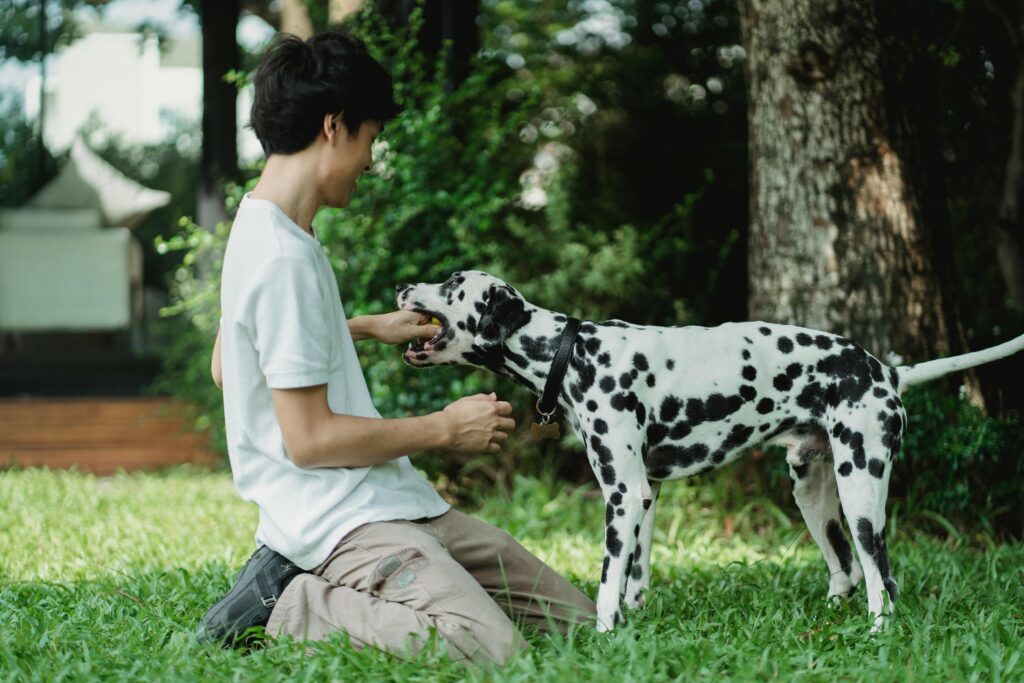
1] Puppy Instincts
Gentle mouthing often has its roots in puppyhood, where dogs use their mouths to explore the world and communicate with their littermates and mother.
The tactile experience of gently mouthing provides sensory feedback, and if your dog experienced this behavior during their formative months, it might persist into adulthood.
Understanding the origin of this instinctual behavior is crucial in addressing it appropriately.
2] Affectionate Gesture
For certain dogs, gentle mouthing serves as an affectionate gesture, reflecting their desire to express love and strengthen their bond with their owners.
Context plays a vital role in interpreting this behavior—observing accompanying body language and the overall demeanor of your dog helps discern whether it’s an affectionate display.
Tip: “Pay attention to context and body language to gauge the affectionate intent.”
3] Exploratory Behavior
Dogs heavily rely on their sense of smell and taste, and gently mouthing your hand might be their way of exploring scents and tastes.
This behavior mirrors how dogs use their mouths to investigate their surroundings.
Recognizing it as an exploratory behavior sheds light on the innocent curiosity that drives your dog to interact with their environment.
4] Communication Style
Dogs communicate primarily through body language, and gentle mouthing is a component of their nuanced communication repertoire.
It can convey various messages, ranging from a desire for attention to a request for interaction.
Becoming attuned to your dog’s body language is pivotal in deciphering the intent behind their gentle mouthing.
In the ballet of communication, a gentle nip is a graceful movement in the dance of connection
5] Teething Comfort
Similar to human babies, dogs go through teething phases that can cause discomfort.
Gentle mouthing might serve as a soothing mechanism for teething-related pain.
Providing appropriate chew toys offers a constructive outlet for this natural behavior, redirecting their focus in a positive direction.
• Gentle mouthing can serve as a soothing mechanism for teething pain • Offer appropriate chew toys as a constructive outlet • Redirects focus positively and helps alleviate teething discomfort
6] Playful Interaction
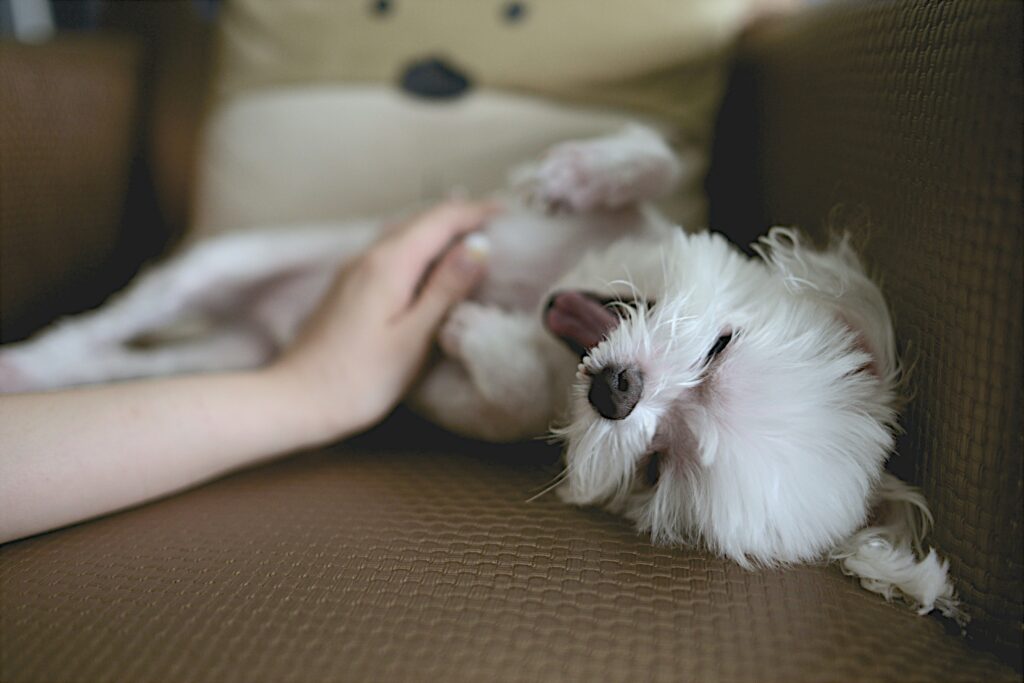
If your dog was part of a litter, gentle mouthing likely played a role in their play interactions.
This behavior can carry over into adulthood, particularly during moments of excitement and playfulness.
Recognizing the playfulness associated with this behavior helps in managing it effectively.
Tip: “Recognize this behavior during moments of excitement and playfulness.”
7] Social Bonding
In a canine pack, members engage in gentle mouthing to reinforce social bonds.
Your dog may perceive you as a part of their pack, expressing this connection through gentle interactions.
Understanding the social dynamics at play enhances your comprehension of your dog’s need for connection and belonging.
8] Attention-Seeking Behavior
Dogs crave attention, and gentle mouthing can be a way for them to seek interaction with their owners.
If your dog gently mouths your hand, it may be a bid for your attention and engagement.
Responding appropriately to this behavior helps fulfill their social needs positively.
In the dance for attention, a gentle nip is a graceful step towards connection.
9] Training Residue
In some instances, unintentional reinforcement during training may contribute to gentle mouthing.
If your dog received attention or positive reactions when mouthing as a puppy, they might continue the behavior as adults.
Being aware of unintentional reinforcement allows you to adjust your responses to discourage this behavior.
10] Anxiety or Nervousness
For some dogs, gentle mouthing can serve as a coping mechanism for anxiety or nervousness.
Observing the context and accompanying cues helps determine if this behavior is linked to emotional stress.
Addressing the root cause of anxiety is essential in managing and mitigating this form of coping behavior.
11] Play Bows
A play bow often accompanies gentle mouthing, where the front part of the body is lowered while the hindquarters remain up.
This posture is a clear invitation for playful interaction, indicating a positive and joyful intent.
Recognizing the playfulness associated with this behavior allows you to respond appropriately and engage in positive interactions with your dog.
Tip: “Recognize the positive intent and engage in play if appropriate.”
12] Respectful Communication
In the canine world, lower-ranking dogs may offer gentle mouthing as a sign of respect to higher-ranking individuals.
If your dog sees you as a leader, this behavior may be a display of acknowledgment and respect.
Understanding the hierarchical aspect of this behavior contributes to a clearer interpretation.
13] Natural Grooming Behavior
Dogs may engage in gentle mouthing as a form of grooming, imitating the actions of their mother.
This behavior reflects a sense of comfort and trust, as it replicates the care received during puppyhood.
Recognizing it as a grooming behavior reinforces the idea that your dog perceives you as a source of security and nurturing.
In the echoes of puppyhood, gentle mouthing is a brushstroke in the painting of canine care.
14] Redirecting Energy
During moments of heightened excitement or anticipation, dogs may redirect their excess energy through gentle mouthing.
Recognizing this behavior as an outlet for excitement allows you to manage it effectively.
Providing alternative outlets for energy, such as structured play or interactive toys, can help redirect their enthusiasm positively.
15] Positive Reinforcement
Encouraging positive behavior through reinforcement is a fundamental aspect of addressing gentle mouthing.
When your dog engages in gentle mouthing at appropriate times, offering praise, treats, or affection reinforces the desired behavior.
Positive reinforcement strengthens the bond between you and your furry friend, creating a harmonious and mutually respectful relationship.
Why Does My Dog Gently Mouth My Hand: FAQs
Is gentle mouthing harmful?
Gentle mouthing, when appropriate and controlled, is generally harmless. However, it’s essential to monitor the behavior and redirect it if it becomes excessive or uncomfortable.
Can I train my dog to stop gentle mouthing?
Yes, training can help modify this behavior. Use positive reinforcement to encourage alternative behaviors, such as sitting or offering a toy when your dog seeks interaction.
When should I be concerned about gentle mouthing?
If gentle mouthing becomes rough or seems to escalate into more assertive behavior, it’s advisable to consult with a professional trainer or behaviorist for guidance.
Can older dogs exhibit gentle mouthing?
Yes, older dogs can exhibit gentle mouthing behavior, especially if it was ingrained during puppyhood. Training can still be effective in modifying this behavior in older dogs.
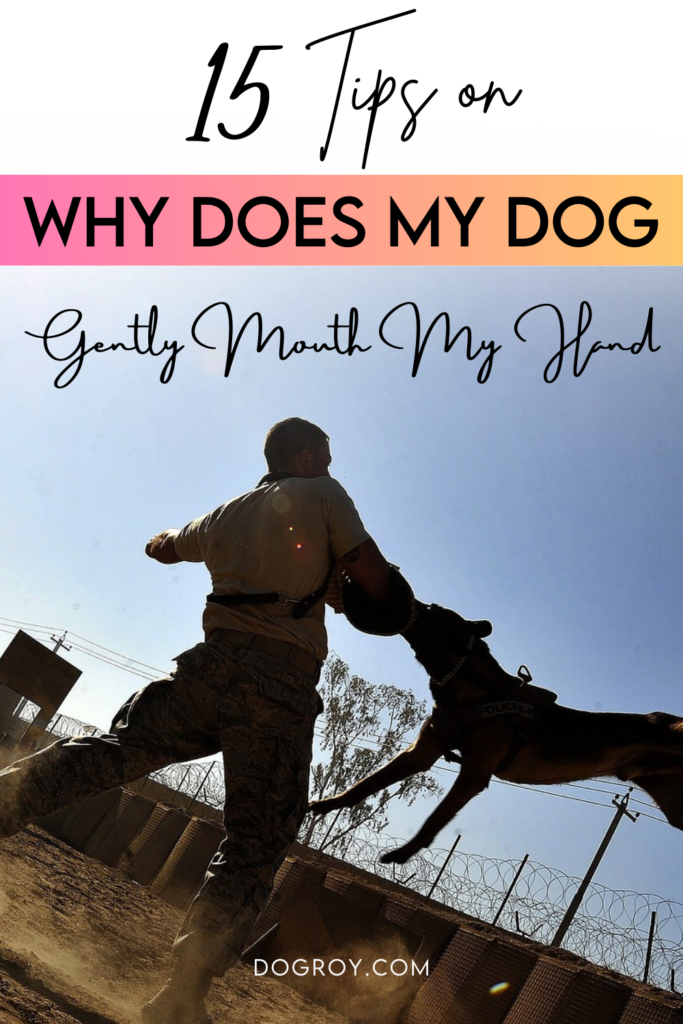
Conclusion:
Understanding the question Why does my dog gently mouth my hand? opens a window into the fascinating world of canine communication.
Armed with the 15 tips provided, you can navigate this behavior with confidence, redirecting when needed and fostering a deeper connection with your furry friend.
Embrace the quirks of your dog’s natural instincts, and enjoy the enriched relationship that comes with deciphering the language of gentle mouthing.
Together, you and your canine companion can embark on a journey of mutual understanding and trust.

